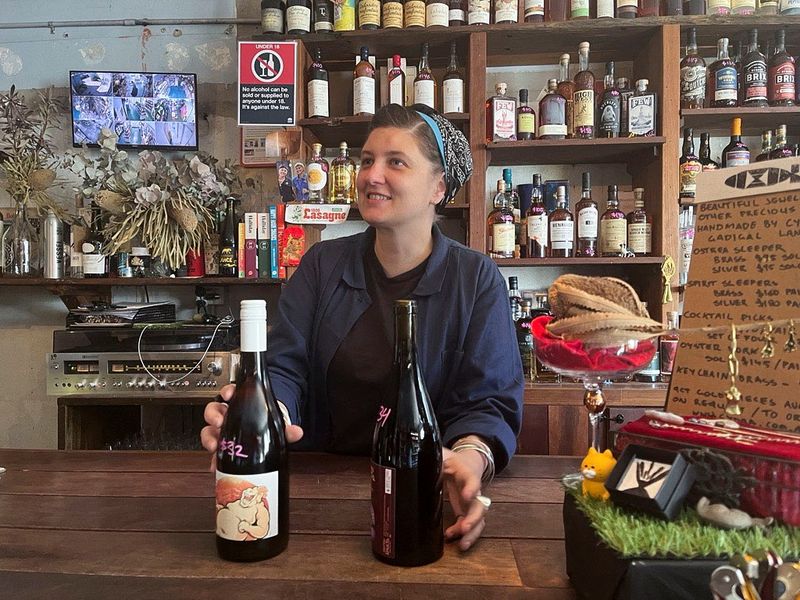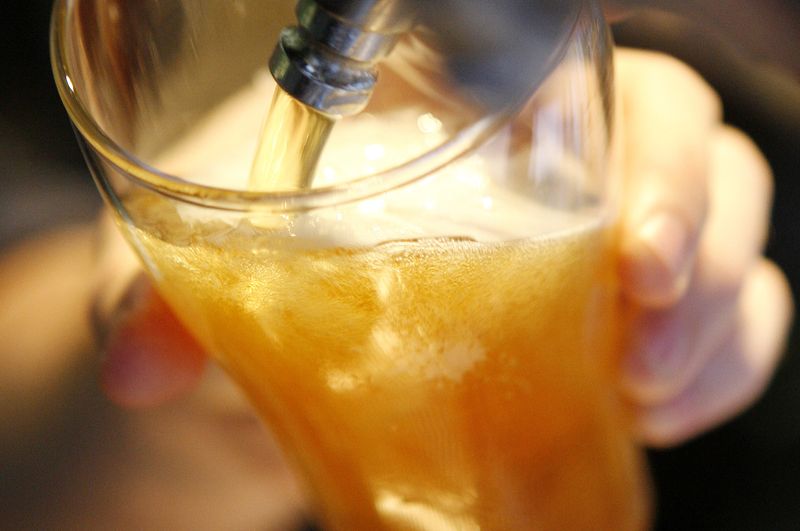By Byron Kaye
SYDNEY (Reuters) - A recent slump in sales means Sydney liquor store owner Louise Dowling has to work an additional 40 hours a week to make up for the staff she had to let go, as a prolonged cost of living crisis in Australia drives more people to drink less.
"Without the foot traffic, without the sales, you don't have the money to employ extra people," said Dowling at her P&V Wine + Liquor Merchants store in Enmore, a popular dining and nightlife suburb.
"Everyone's trying to tighten their belts, including us."
After a surge in sales propelled by pandemic lockdowns and unused savings, Australia's alcohol industry is in its sharpest downturn in memory as more people cut back on discretionary spending and turn to healthier ways to relax.
In the year to June, alcohol sales grew just 0.7%, the slowest pace in at least a quarter century, according to Australian Bureau of Statistics (ABS) data, and even that small increase was more likely due to rising prices, as alcohol sales volumes fell 3.9% in the same period.
Australia is one of the world's wealthiest countries per capita and one of its highest-spending on alcohol per capita, and the slowdown coincides with a decade-long decline in the number of people who drink globally, due to health concerns or just personal choice.
The effects of these downtrends were on display in the year-end earnings posted by alcohol sellers this month.
The second-largest alcohol retailer by sales, supermarket giant Coles,, said its liquor store profit fell 21%, largely due to a decline in discretionary spending, while the biggest wine producer Treasury Wine also reported a 7% drop in its mid-range unit's profit, partly due to "soft consumption trends" in Australia and Britain.
Endeavour, the biggest liquor store and pub owner by sales, bucked the trend with a meagre 1.8% increase in pre-tax profit, but was downgraded by analysts after it said retail sales rose just 0.6% in the first six weeks of the 2024/5 financial year.
Tom Kierath, an analyst at investment bank Barrenjoey, said that before the pandemic, alcohol companies benefited by marketing more expensive products, and then during some of the world's longest lockdowns, the same firms saw a surge in people stocking up their cellars.
But as inflation soared after the pandemic, two years of soaring bills for housing, energy and petrol have left drinkers looking to spend less, he added.
"People are looking to save money now, and in a bunch of consumer categories people are downgrading," he said. "Alcoholic drinks is no different."
Australia's biggest brewer by volume Asahi, maker of beer fridge staples including Victoria Bitter and Carlton Draught, said in a half-year update its operating profit in Australia and New Zealand fell 11.7% and cut its full-year profit forecast for the region to 1.7% growth from 9% growth.
HEALTHIER, CHEAPER
While alcohol remains infused in the social life and identity of Australians, researchers say they expect the abstinence trend to grow over the next few years.
The Australian alcohol market shrank 3% from 2022 to 2023, the most among major markets such as China, the United States and Britain, according to data shared by industry researcher IWSR which forecasts the Australian market to grow just 1% a year, on average, until 2028.
Cost is certainly a factor, said IWSR research director for Asia Pacific Sarah Campbell.
The government levies inflation-indexed tax hikes on alcohol producers twice a year, and this, along with rising costs of labour and ingredients, among other things, means companies are no longer in a position to absorb these increases so pass them on to the consumer, she said.
"Australian drinkers remain in down-trading mode," Campbell added.
Health concerns, which became more heightened after COVID, are also driving more people away from drink.
Data shared by the Australian Institute of Health and Welfare, a government body, showed that while the number of people who drink frequently has declined slightly, those who don't drink at all jumped to 23.1% of the population in 2023 from 16.4% in 2001.
Michael Livingston, an alcohol policy researcher at Curtin University, said the jump in abstinence began a decade ago with teenagers who were consumed with "stress about the state of the world and their lives".
"That generation is now ageing into the peak drinking years," he said.
Alcohol producers and retailers had fought against this trend by targeting their marketing to various groups of drinkers but "there's not many avenues open to them at this point to maintain profitability at the level they were", Livingston added.

Melbourne blogger Natalie Battaglia, who started posting non-alcoholic drinks recipes on Instagram account The Mindful Mocktail in 2020, said her followers jumped from 120,000 to 586,000 in the past 18 months due to interest in becoming "sober curious". About one-third of her followers are aged 18 to 25.
"This growing focus on health and wellness, alongside the financial pressures from the cost of living crisis, suggest that demand may not return to pre-downturn levels," she said.
